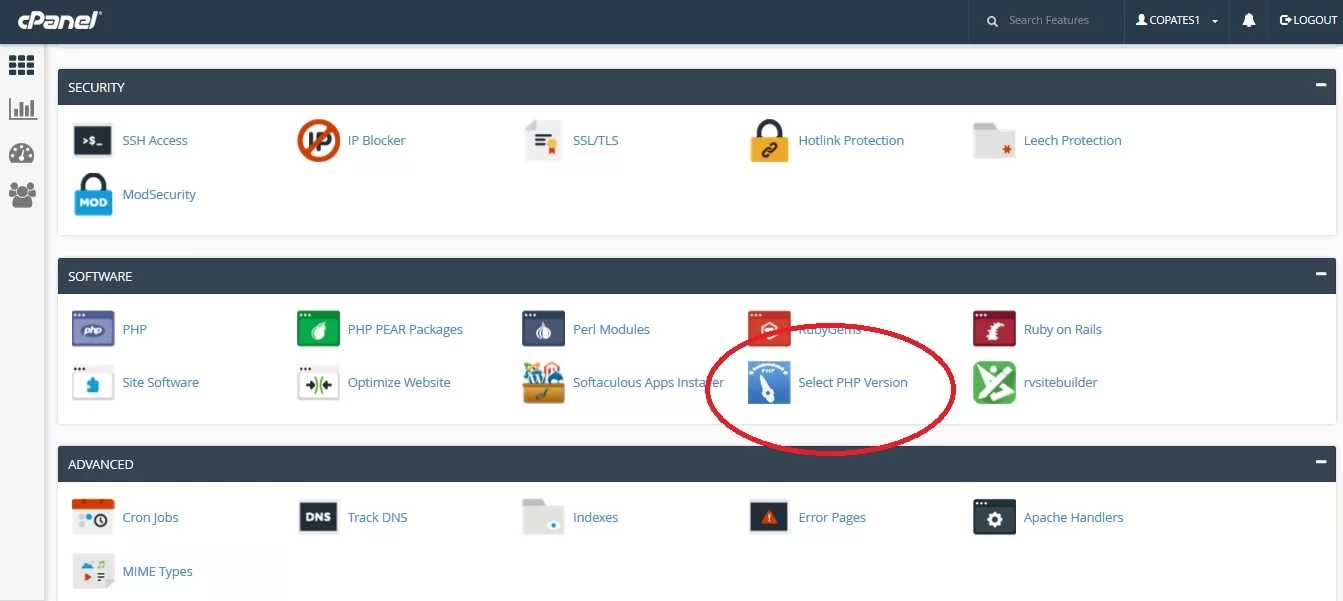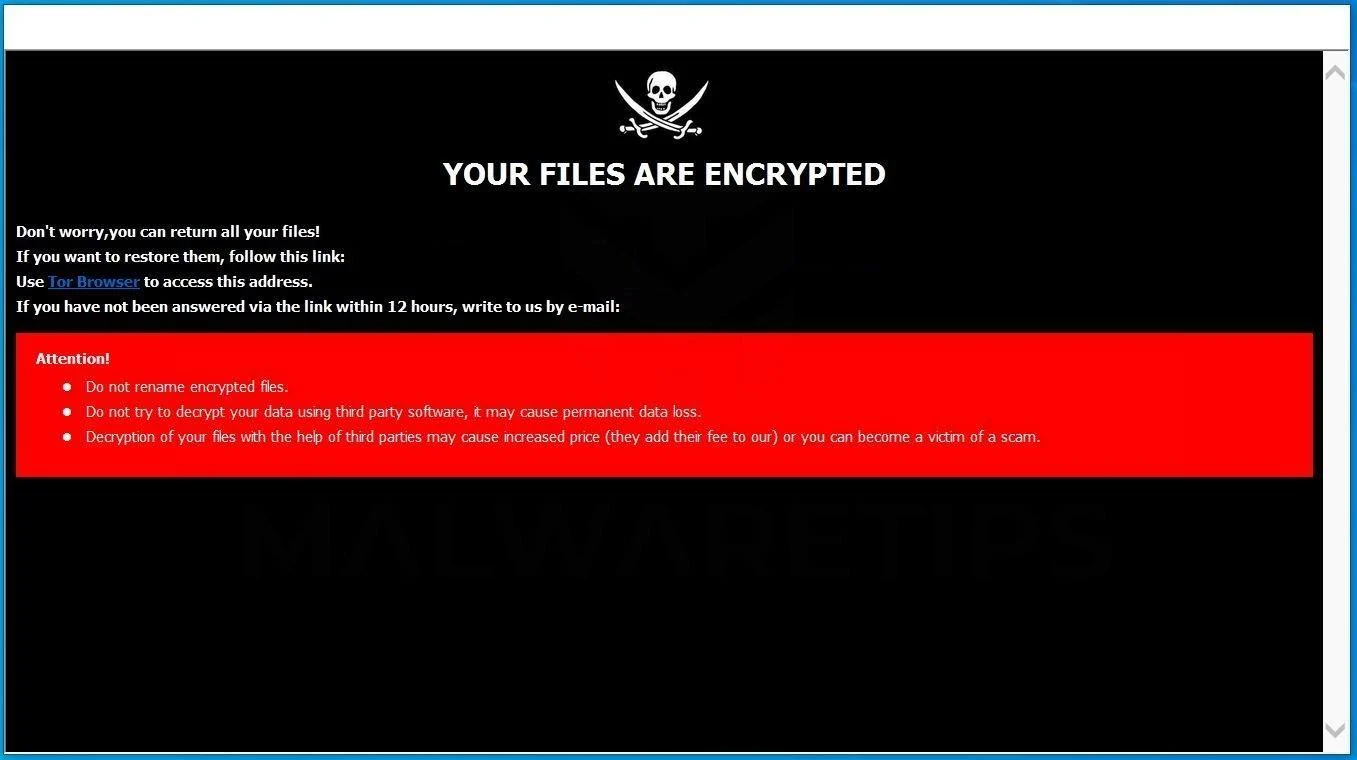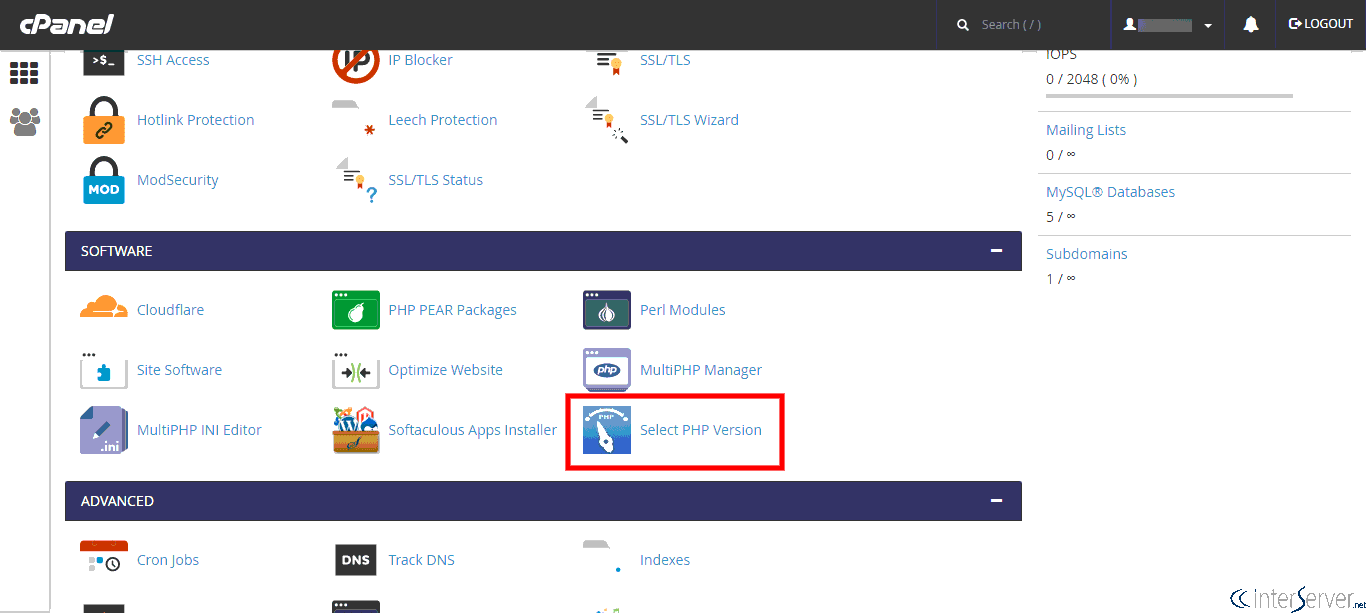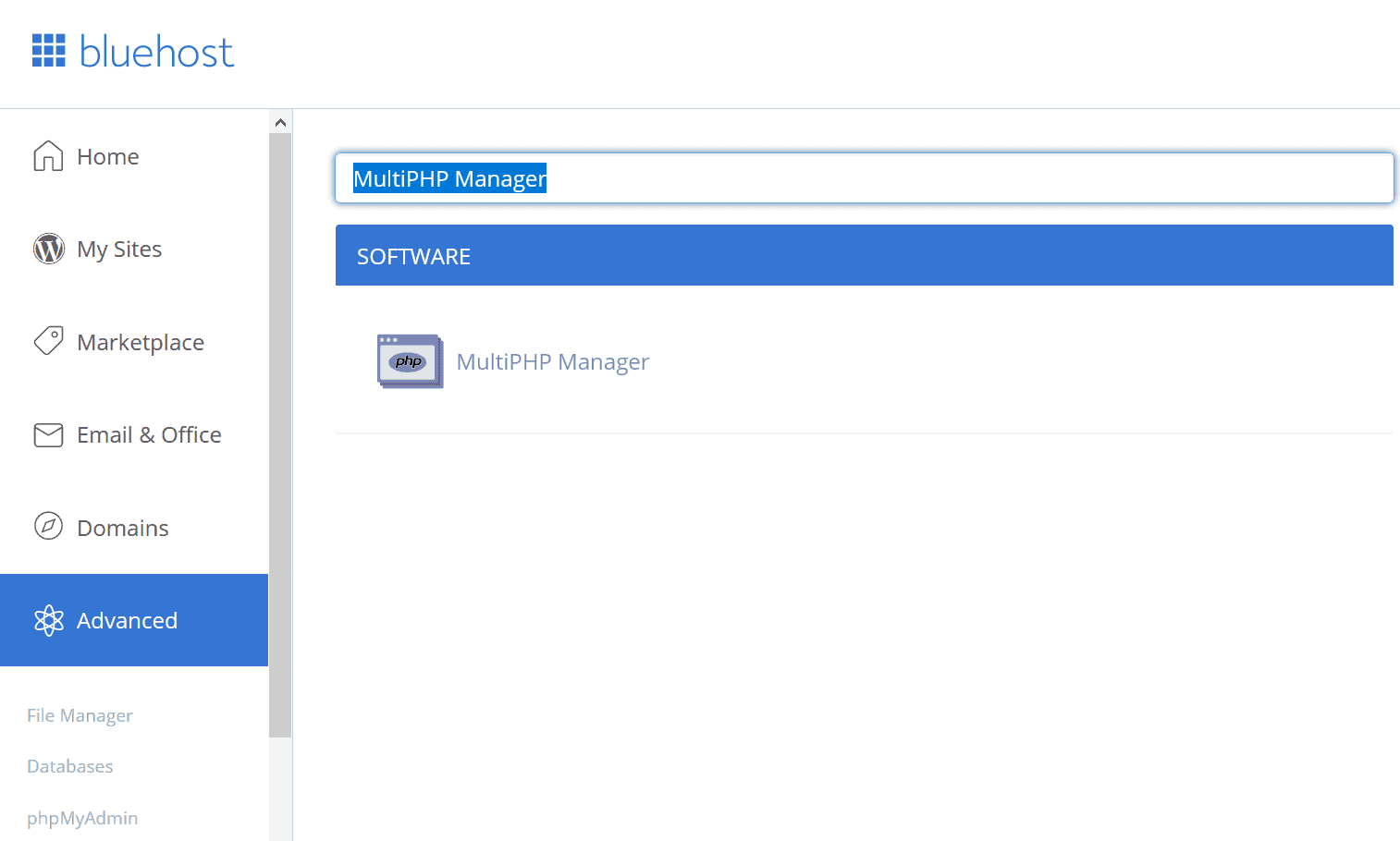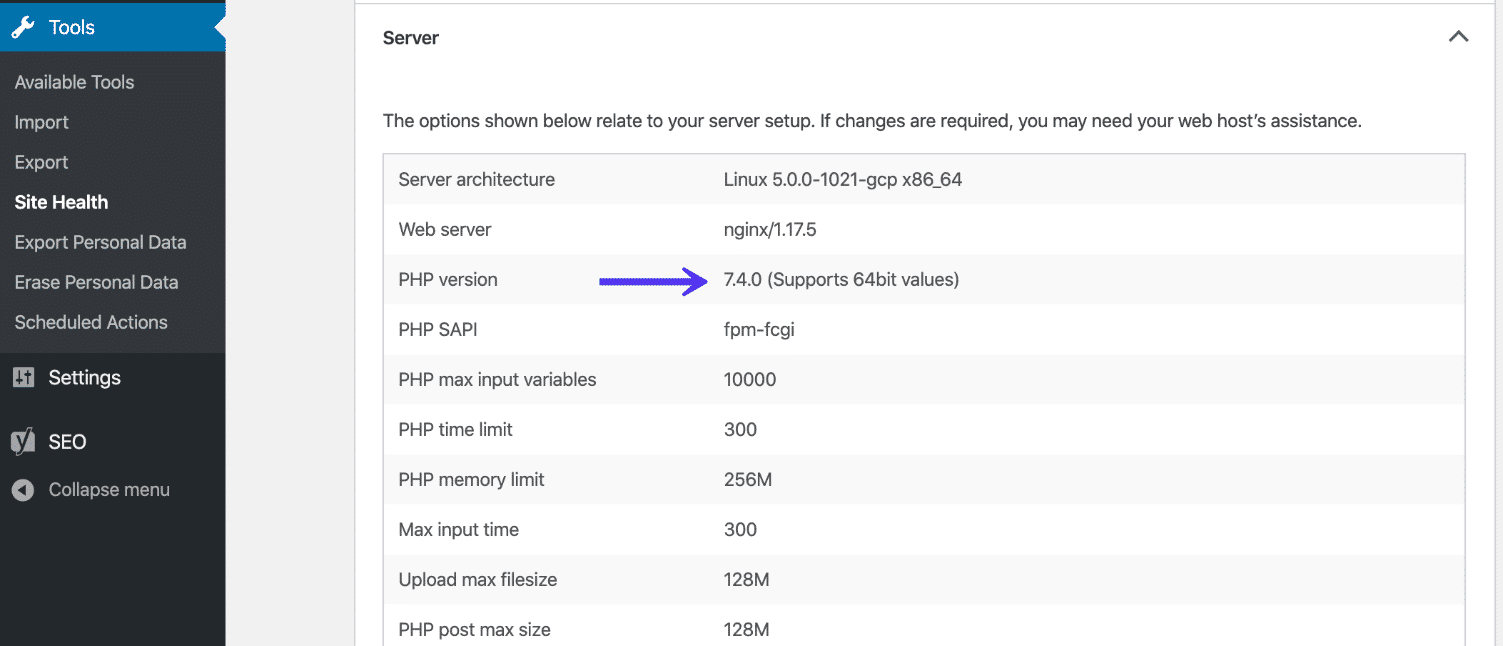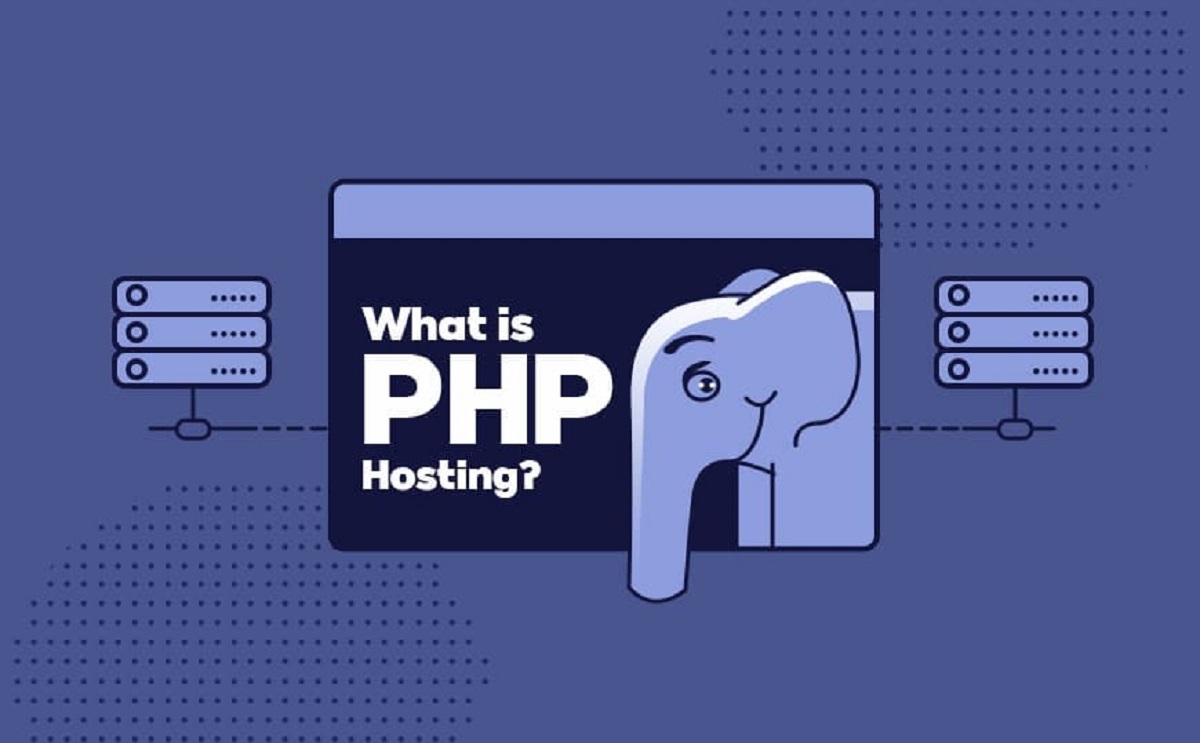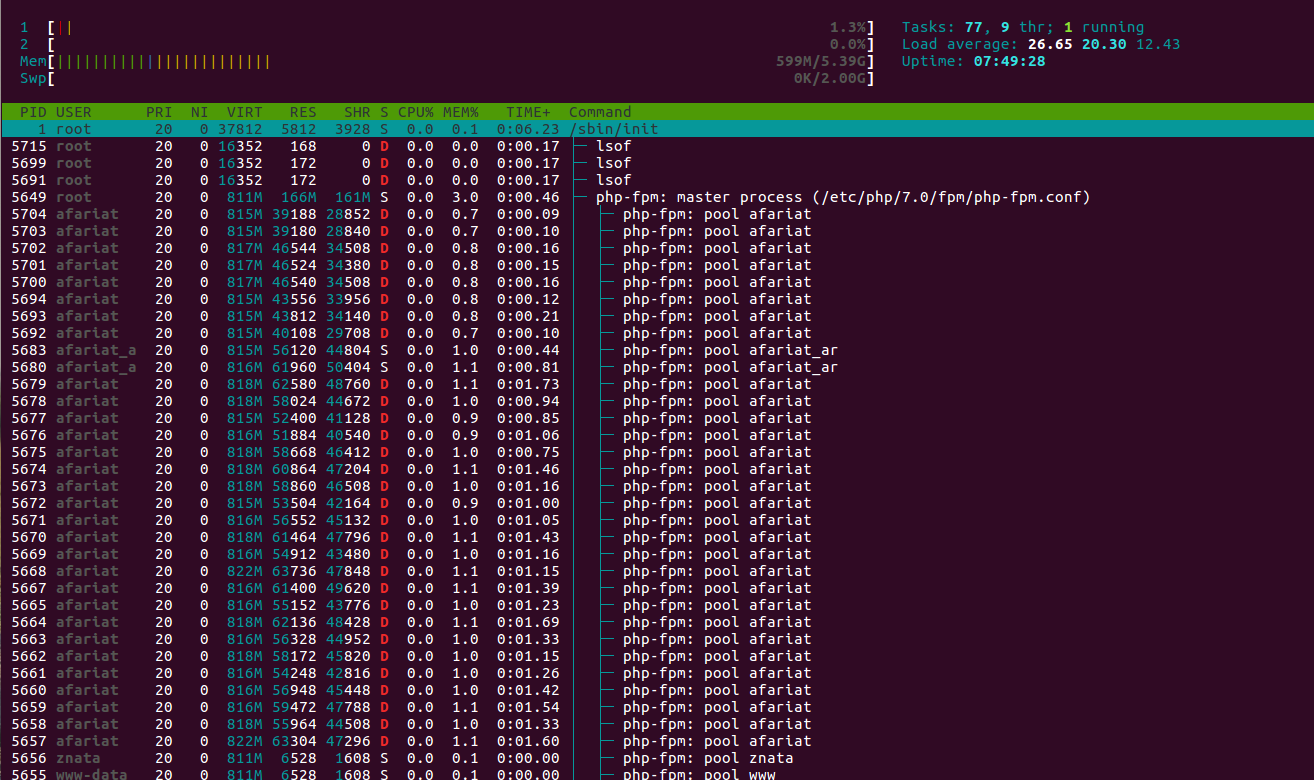Introduction
Welcome to the world of PHP websites, where the power of code meets the beauty of design. In this digital era, having a website is essential for any business or individual looking to establish an online presence. However, with a plethora of programming languages available, it can be overwhelming to choose the right one.
PHP, which stands for Hypertext Preprocessor, is a server-side scripting language that has gained immense popularity over the years. It is versatile, efficient, and offers a wide range of functionality that makes it a top choice for website development. Whether you are building a simple personal blog, an e-commerce platform, or a complex web application, PHP can handle it all.
But what sets PHP apart from other languages? One of the major benefits of using PHP is its simplicity. It has a clean and intuitive syntax, making it easy to learn and master. Additionally, PHP integrates seamlessly with HTML, allowing developers to embed dynamic content into web pages. This flexibility gives you the freedom to design and customize your website according to your specific needs and preferences.
Furthermore, PHP has a vast and active community of developers who constantly contribute to its improvement. This means that even if you are new to PHP, you can find plenty of online resources, tutorials, and forums to support you in your journey. Moreover, the frequent updates and enhancements in PHP ensure that your website stays up-to-date with the latest security measures and performance optimizations.
In this article, we will delve deeper into the world of PHP websites. We will explore how PHP works, the benefits it offers, and how you can build a PHP website from scratch. We will also discuss PHP frameworks and content management systems that can make your development process even more efficient. So, let’s dive in and discover the potential of PHP for your website!
What is PHP?
PHP (Hypertext Preprocessor) is a widely used server-side scripting language designed specifically for web development. It was originally created by Rasmus Lerdorf in 1994 as a set of tools to manage his personal website. Over time, PHP evolved into a powerful and versatile language that is now used by millions of websites worldwide.
PHP is an open-source language, which means that it is freely available for anyone to use and modify. This has contributed to its widespread adoption and continuous improvement by a large community of developers. PHP code is executed on the server-side, meaning that it is processed on the web server before being sent to the user’s browser.
One of the key advantages of PHP is its ability to seamlessly integrate with HTML. PHP code can be embedded directly within HTML code, allowing developers to dynamically generate web content. This makes it easy to create dynamic web pages that can display information from a database, process form submissions, or perform other server-side operations.
PHP provides a wide range of features and functionality that make web development efficient and enjoyable. It supports various databases such as MySQL, SQLite, and PostgreSQL, making it ideal for building data-driven applications. PHP also has extensive libraries and frameworks that help developers streamline the development process and enhance the performance and security of their websites.
Moreover, PHP is a platform-independent language, meaning that it can run on different operating systems like Windows, Linux, and macOS. This flexibility allows developers to create PHP websites that can be deployed on a wide range of servers.
Overall, PHP is a versatile and powerful scripting language that empowers developers to create dynamic and interactive websites. Its simplicity, extensive community support, and wide range of features have contributed to its popularity among developers and businesses alike. Whether you’re building a simple personal blog or a complex e-commerce platform, PHP provides the tools and resources needed to bring your vision to life.
Benefits of using PHP for websites
When it comes to choosing a programming language for website development, PHP offers a multitude of benefits that make it a preferred choice for developers. Let’s explore some of the key advantages of using PHP.
1. Easy to Learn and Use: PHP has a straightforward and intuitive syntax, making it easy for beginners to learn and start coding. The simplicity of PHP allows developers to quickly build websites without getting overwhelmed by complex language constructs.
2. Seamless Integration with HTML: PHP seamlessly integrates with HTML, allowing developers to embed PHP code directly within HTML markup. This makes it convenient for generating dynamic web content and combining server-side logic with client-side presentation.
3. Excellent Community Support: PHP has a vast and active community of developers who contribute to its growth and development. This means that there are plenty of online resources, tutorials, and forums available to help developers solve problems, share knowledge, and learn from one another.
4. Extensive Library and Framework Support: PHP offers a wide range of libraries and frameworks that provide pre-built functions and modules to streamline development. Frameworks like Laravel, Symfony, and CodeIgniter help developers build robust and scalable applications faster by providing well-defined architectural patterns.
5. Cross-Platform Compatibility: PHP is a platform-independent language, which means that it can run on various operating systems like Windows, Linux, and macOS. This flexibility allows developers to deploy PHP websites on different servers without any compatibility issues.
6. Database Integration: PHP has built-in support for various databases such as MySQL, SQLite, and PostgreSQL. This makes it easy to connect to a database, retrieve and store data, and build dynamic websites that interact with user input and process information.
7. Performance and Scalability: PHP is highly optimized for web development, offering excellent performance and scalability. It has features like opcode caching and fast request handling, which ensure that PHP websites can handle high traffic and deliver a smooth user experience.
8. Continuous Improvement: PHP is an open-source language, constantly evolving with regular updates and enhancements. The PHP community actively contributes to its development, addressing security vulnerabilities, improving performance, and introducing new features to keep up with the evolving web development landscape.
These are just a few of the many benefits of using PHP for website development. By leveraging the power and flexibility of PHP, developers can create dynamic, interactive, and high-performing websites that meet the unique needs of their clients or businesses.
How does PHP work?
PHP is a server-side scripting language, meaning that it is executed on the web server before being sent to the user’s browser. Let’s take a closer look at how PHP works behind the scenes.
1. Client Request: When a user visits a website that contains PHP code, their browser sends a request to the web server. The request includes the URL of the PHP file.
2. Web Server Processing: The web server receives the client request and identifies that the requested file has a .php extension. It knows that the file contains PHP code and needs to be processed by the PHP engine.
3. PHP Engine Execution: The web server passes the PHP file to the PHP engine for execution. The PHP engine reads and interprets the PHP code line by line, executing any instructions or calculations found within.
4. Server-Side Operations: PHP allows developers to perform a wide range of server-side operations, such as interacting with databases, processing form data, manipulating files, and generating dynamic content. These operations are carried out by the PHP engine during the execution process.
5. Server Response: After executing the PHP code, the PHP engine generates the output, which is typically HTML, CSS, or JavaScript code. This output is then sent back to the web server as the server’s response to the client’s request.
6. Client-Side Rendering: The web server receives the server response, which contains the HTML, CSS, or JavaScript generated by the PHP code. The web server sends this response to the client’s browser, which then renders the content and displays it to the user.
Throughout this process, PHP seamlessly integrates with HTML, allowing developers to mix PHP code with HTML markup to create dynamic web pages. PHP code can be inserted within tags or using the shorthand tags to output variables or execute PHP expressions directly within HTML code.
PHP also provides various functions and extensions that facilitate common tasks and simplify web development. These functions can be used to validate user input, manipulate strings and arrays, handle file uploads, and more.
By harnessing the power of PHP, developers can create websites that dynamically generate content, personalize user experiences, and perform complex server-side operations to meet the unique requirements of their applications.
Building a PHP website from scratch
Building a PHP website from scratch requires careful planning and a step-by-step approach. Let’s explore the essential steps involved in creating a PHP website:
1. Define your Website’s Purpose: Start by determining the purpose and goals of your website. Decide whether it will be a personal blog, an e-commerce store, a portfolio site, or any other type of website.
2. Plan the Website Structure: Map out the structure of your website by creating a sitemap. Define the main pages, sub-pages, and navigation structure to ensure a logical and user-friendly layout.
3. Design the User Interface: Create the visual design of your website by designing wireframes and mockups. Use design tools or hire a professional designer to create an appealing and intuitive user interface.
4. Set up the Development Environment: Install a local web server (such as XAMPP or WAMP) on your computer to create a local development environment. This allows you to develop and test your PHP website locally before deploying it to a live server.
5. Write PHP and HTML Code: Begin coding your PHP website by creating the necessary HTML files for each page. Embed PHP code within these HTML files to add dynamic functionality and interaction.
6. Database Integration: If your website requires data storage or retrieval, integrate a database like MySQL or PostgreSQL. Create database tables, connect to the database, and write PHP code to interact with the database.
7. Implement Features and Functionality: Add features like user registration, login/logout functionality, contact forms, search functionality, and any other interactive elements your website requires. Write PHP code to handle these features and ensure their proper functionality.
8. Test and Debug: Thoroughly test your PHP website by simulating various user interactions and scenarios. Check for any bugs or issues and debug them to ensure a smooth and error-free user experience.
9. Optimize Performance and Security: Optimize your PHP website for performance by implementing caching mechanisms, optimizing database queries, and applying necessary security measures. Use PHP security best practices to protect against common vulnerabilities.
10. Deploy to a Web Server: Choose a reliable web hosting provider and deploy your PHP website to a live server. Configure the server environment, upload the website files, and set up any necessary domain or DNS settings.
Remember to regularly update and maintain your PHP website by applying security patches, adding new features, and monitoring its performance. Continuously improve and enhance your website to keep up with evolving technologies and user expectations.
PHP frameworks and content management systems
PHP frameworks and content management systems (CMS) are powerful tools that can significantly simplify and accelerate the process of building PHP websites. Let’s explore the benefits and functionalities of these frameworks and CMS:
1. PHP Frameworks: PHP frameworks provide a structured and organized approach to web development, offering a set of reusable components and libraries. They help streamline the development process, improve code quality, and enhance the scalability and maintainability of PHP applications. Popular PHP frameworks include Laravel, Symfony, CodeIgniter, and CakePHP.
These frameworks offer features such as routing, database abstraction, templating engines, authentication mechanisms, and much more. By utilizing a PHP framework, developers can save time by leveraging pre-built functionality and focusing on implementing custom business logic. Additionally, frameworks enforce proper coding practices, enhancing the security and performance of PHP websites.
2. Content Management Systems: CMS platforms provide a user-friendly interface for managing and updating website content. With a CMS, non-technical users can easily add or modify pages, upload media files, create forms, manage user accounts, and perform other administrative tasks without any coding knowledge. Popular PHP CMS platforms include WordPress, Drupal, and Joomla.
CMS platforms offer a wide range of templates, themes, and plugins that extend the functionality and customization options. They provide robust content creation and management capabilities, making them ideal for blogs, news websites, corporate websites, and even e-commerce stores. CMS platforms also handle essential security features, such as user authentication, role-based access control, and protection against common web vulnerabilities.
Both PHP frameworks and CMS platforms have their unique strengths and use cases. Frameworks are suitable for developers who want more control over the codebase and want to build a custom website from scratch. They provide the flexibility to create tailored solutions and cater to specific requirements.
CMS platforms, on the other hand, are ideal for non-technical users or businesses that need a quick and user-friendly solution. They offer a wide range of plugins and themes to choose from, allowing users to build and customize their websites without extensive coding knowledge.
Ultimately, the choice between a PHP framework and a CMS depends on the specific project requirements, technical expertise, and development approach. Both options can significantly simplify and enhance the process of building PHP websites, enabling developers and users to create robust, scalable, and feature-rich web applications.
Common features of a PHP website
PHP websites can incorporate a wide range of features and functionality to enhance user experience, streamline operations, and provide value to visitors. Here are some common features that you may find in PHP websites:
1. User Registration and Authentication: PHP websites often include user registration and authentication systems. This allows visitors to create accounts, login securely, and access personalized features and content. User authentication ensures that only authorized individuals can access certain areas of the website.
2. Content Management: PHP websites often contain dynamic content that can be easily managed through a content management system (CMS). CMS platforms like WordPress or Joomla enable website owners to create, edit, and publish content without needing any coding knowledge.
3. Forms and Data Submission: PHP enables the creation of interactive forms that allow users to provide information or submit data. This can include contact forms, registration forms, feedback forms, or any other type of submission-based functionality.
4. Database Integration: Many PHP websites use databases to store and manage dynamic data. PHP provides robust database integration capabilities, allowing developers to connect to databases, query data, and perform CRUD operations (Create, Read, Update, Delete) efficiently.
5. E-commerce Functionality: PHP is widely used in the development of e-commerce websites. It enables the integration of shopping carts, payment gateways, order processing, inventory management, and other essential features required for online transactions.
6. Search Functionality: PHP websites can include search functionality to help users find specific information or products. This involves implementing search algorithms, indexing data, and displaying relevant search results to users.
7. Social Media Integration: PHP websites often integrate with various social media platforms to allow users to share content, comment, and engage with the website through social media channels. This can increase website visibility, user engagement, and brand exposure.
8. Security Measures: PHP websites incorporate various security measures to protect against unauthorized access, data breaches, and other security threats. This can include implementing user authentication, input validation, secure connections (HTTPS), and protection against SQL injection and cross-site scripting (XSS) attacks.
9. Responsive Design: PHP websites are often designed to be responsive, ensuring optimal user experience across different devices and screen sizes. Responsive design allows the website layout and content to adapt seamlessly to desktops, tablets, and mobile devices.
10. Analytics and Reporting: PHP websites may integrate tracking and analytics tools like Google Analytics to collect data on website traffic, user behavior, and other metrics. This data can be used to analyze website performance, make informed decisions, and optimize the website for better results.
These common features are just a glimpse of what PHP websites can offer. Depending on the specific needs and goals of a website, additional features and functionality can be integrated to provide a tailored user experience and meet specific business requirements.
Popular websites built with PHP
PHP is a widely used web development language, powering a multitude of popular websites across various industries. Here are some examples of well-known websites that are built with PHP:
1. Facebook: One of the most popular social networking sites, Facebook, is built on PHP. PHP’s ability to handle large amounts of data, interact with databases, and deliver dynamic content makes it an excellent choice for a site with billions of users.
2. Wikipedia: As the world’s largest online encyclopedia, Wikipedia relies on PHP for its development. PHP’s simplicity, scalability, and ability to handle community-driven content contribution make it a suitable choice for the platform.
3. WordPress: WordPress, one of the most widely used content management systems (CMS), is built with PHP. It powers millions of websites and blogs and provides a user-friendly interface for easily managing and updating website content.
4. Etsy: Etsy, a popular e-commerce platform for handmade and vintage items, utilizes PHP for its website development. PHP’s robust database integration and security features make it a suitable choice for e-commerce websites that require dynamic product listings and transaction processing.
5. Slack: Slack, a team collaboration and communication tool, is implemented using PHP. PHP’s real-time capabilities, ability to handle large concurrent user connections, and integration with other web technologies make it a reliable choice for such applications.
6. Yahoo: Yahoo, the widely recognized web portal, employs PHP for various aspects of its website. PHP’s versatility and compatibility with different systems and technologies make it an ideal choice for building complex web applications.
7. MailChimp: MailChimp, a popular email marketing platform, relies on PHP for its website and backend infrastructure. PHP’s ability to handle large amounts of data, integrate with databases, and provide a secure environment for handling sensitive information contribute to its suitability for this platform.
8. Magento: Magento, a widely adopted e-commerce platform, is built entirely with PHP. PHP’s object-oriented programming capabilities, built-in caching, and extensible architecture make it an ideal language for building scalable and customizable online stores.
9. Badoo: Badoo, a popular dating platform, utilizes PHP for its website development. PHP’s performance, database integration, and flexibility in handling user interactions make it an excellent choice for building matchmaking and social networking websites.
10. Drupal: Drupal, a robust content management system, relies on PHP for its foundation. PHP’s ability to handle complex content structures, provide extensive customization options, and support countless modules makes it an optimal choice for building enterprise-level websites.
These examples demonstrate the versatility and scalability of PHP when it comes to building websites and web applications. The language’s adaptability, large community support, and vast libraries and frameworks contribute to its popularity among developers and businesses across different sectors.
Conclusion
PHP, with its simplicity, versatility, and extensive community support, continues to be a popular choice for website development. It provides developers with the tools and flexibility to create dynamic and interactive websites that meet the unique needs of businesses and individuals alike.
From its humble beginnings as a personal home page tool to being the foundation of some of the largest websites and applications on the internet, PHP has evolved into a robust and powerful scripting language. Its seamless integration with HTML, extensive database support, and numerous frameworks and content management systems make it adaptable to a wide range of projects.
Whether you are building a small personal blog, an e-commerce platform, or a complex web application, PHP offers the features and functionality to bring your ideas to life. Its extensive library ecosystem, strong community support, and continuous improvements ensure that your website stays up-to-date with the latest trends and security measures.
As you embark on your PHP website development journey, remember to incorporate best practices, follow coding standards, and remain updated with the latest advancements in the language. Leverage the power of PHP frameworks and content management systems to simplify development and enhance the scalability and maintainability of your projects.
PHP’s flexibility, performance, and wide range of features make it an excellent choice for developers worldwide. Embrace its power, explore its vast possibilities, and unlock the potential to create robust and dynamic websites that leave a lasting impression on your users.
So, whether you’re starting from scratch or working on a current project, PHP is ready to support your website development needs and help you bring your vision to life efficiently and effectively.









